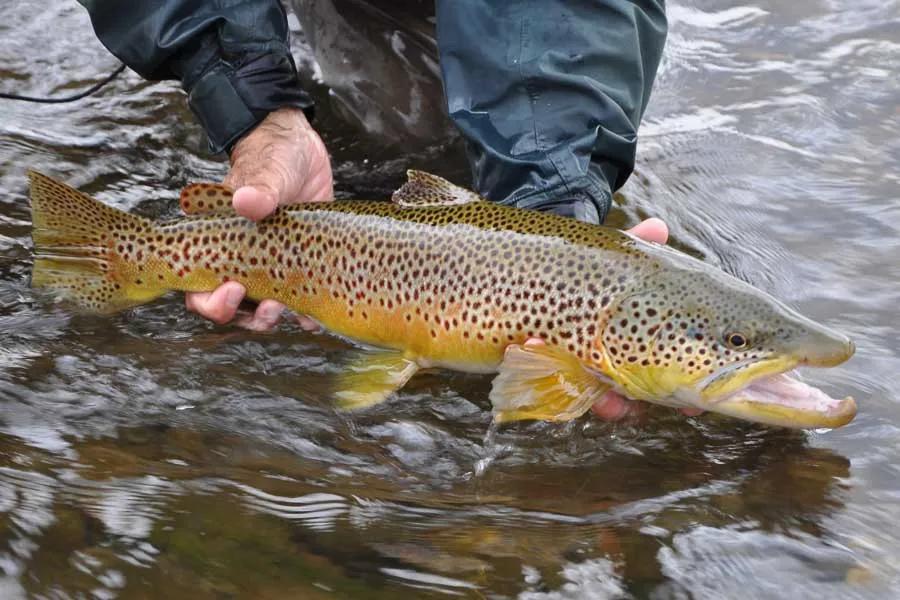
After enjoying a spectacular fall with very pleasant weather, it looks like winter has finally arrived. A winter storm hit on Monday bringing snow and seasonable (i.e. cold) temperatures and the forecast looking forwards looks like temps in the 30's for the foreseeable future. With normal winter weather settling in, we quickly be moving into our wintertime fishing patterns.
Locating Winter Trout
Trout move out of their summertime haunts when cold weather (and water) settles in. Fish engage in a maintenance diet during cold months and experience very little growth. In order to conserve valuable energy, trout move into slower moving water. They generally prefer deeper water (greater than 3 feet) in larger rivers for added safety. The migration towards wintertime holding water produces dense concentrations of trout in a handful of slow and deep runs. The majority of the river becomes nearly devoid of trout. To be successful while fly fishing in Montana in the winter, anglers must focus on these slower and deeper runs that hold fish. Once you locate a good run they can be productive for several hours (on larger rivers) due to the high trout concentrations. Often the bottom of the river in especially good winter holding water will be black with the backs of trout that are packed like cord wood.
Time of day
Trout are cold blooded and feed when water temps reach their peak during the winter months. Don't bother fishing before 11am since trout will be in a thermally induced coma. The best hours to fish in the colder months is from noon until 4pm.
Winter nymph strategies
With some exceptions, winter fly fishing is generally a nymph fishing game. Different patterns work well on different rivers. In general, egg patterns, stone fly patterns and midge larva are a good bet. On tail waters and spring creeks scuds and shrimp patterns trailed by a midge larva is a good bet. The most important aspect of wintertime nymphing is to get slow drag free drifts right on the bottom of the river. Trout are not going to move far to take your flies so it is imperative that long leaders with adequate weights are used to ensure the flies get down to the fish. Takes are very subtle since the trout are not moving far during a take and they are in slow current. Both factors result in very little motion of the indicator. I exclusively use yarn indicators in the water since they help detect these delicate takes. Often a yarn indicator will simply flutter back or twist slowly. Strike first and ask questions later!
Choose your river wisely
Success on winter fly fishing trips is largely dependent on water temperatures. Many freestone rivers become unfishable when large ice shelves develop. Some freestone rivers stay ice free such as stretches of the Gallatin River near Big Sky or the Yellowstone River near Gardiner due to underground springs or hot springs. Another great bet is to target spring creeks and tail waters. Water that bubbles from the ground or flows from the bottom of a dam is warmer than other rivers. The warmer water temperatures results in higher levels of fish activity making locations such as the spring Creeks near Livingston and tail waters like the Missouri or Bighorn a good bet in the winter.
Winter time dry fly fishing
Midge hatches occur in the early winter and again in the early spring. On rivers like the Ruby, East Gallatin, Spring Creeks and Bighorn these hatches can be very strong. Great dry fly fishing can be experienced on these fisheries under these conditions. I prefer sunny days for good midge hatches. The hatches usually occur in the late morning.
